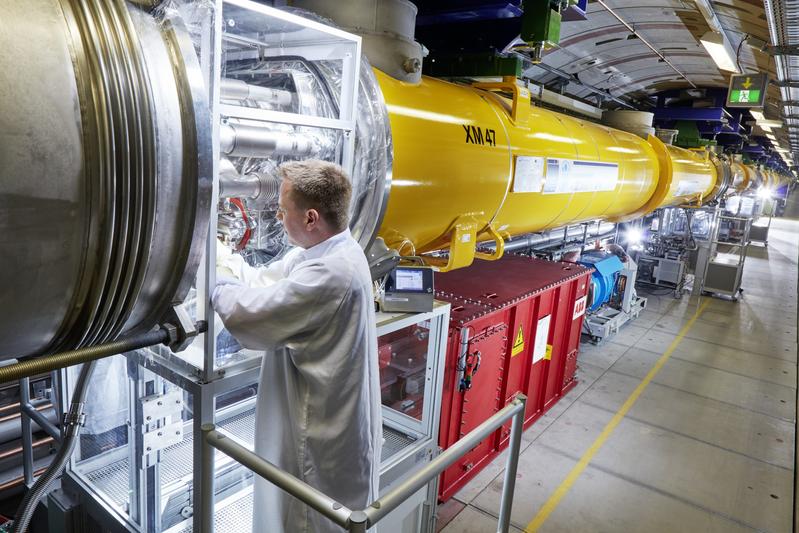European XFEL warmed up for maintenance and conversion for the first time
For more than eight years, the temperature inside the European XFEL electron accelerator was minus 271 degrees Celsius – colder than in space. Now, for the first time, the accelerator has been slowly warmed up to room temperature for mandatory maintenance and extensive conversion work.
"The fact that everything went so smoothly here is also testament to the extreme care with which the facility was installed ten years ago, " says Tobias Schnautz, who, together with his colleagues from the cryogenics group at DESY, is responsible for the complex warming-up process. DESY built the accelerator in collaboration with international partners and now operates it for European XFEL. Warming up to room temperature must be done carefully in order to control the stress caused by the expansion of the material and to prevent possible damage.
Numerous tasks are now planned for the entire facility over the next several months before the accelerator is cooled down to its operating temperature again. The X-ray laser is expected to be available for experiments again in spring 2026.
The immediate reason for the operational break is a mandatory inspection of helium valves, which was not possible when the system was cold. "In addition to this maintenance work, a large number of new installations are planned, which our teams at European XFEL and DESY have been preparing for many years, " explains Winni Decking, head of the accelerator team at DESY. “Among other things, we are installing a completely newly developed electron source at the beginning of the accelerator. The implementation of all these innovations required precise planning and now demands tireless effort. After that, the European XFEL will be thoroughly maintained and open to researchers from all over the world again with many new possibilities at the beginning of 2026.”
European XFEL Managing Director Prof Thomas Feurer emphasises: "The work is an important step towards implementing our future strategy, which we aim to realise by 2032. Key milestones this year include the construction of a new instrument and preparatory steps for the installation of new superconducting undulators – structures that generate X-rays – enabling more precise exploration of the nanocosmos through increased light intensity and shorter wavelengths."
The world's largest X-ray laser is one of the largest research investments in Europe and was completed on time and within budget in 2017. Since then, researchers from all over the world have been successfully using the European XFEL for their experiments. They usually come to Schenefeld for a week to decipher atomic details of viruses or cells, film chemical reactions in real time or study matter under extreme conditions. With more than 11,000 visits – including multiple stays – researchers have since conducted nearly 500 experiments and published their results in prestigious journals.
The European XFEL's superconducting linear accelerator is 1.7 kilometres long, making it the longest of its kind in the world. It accelerates electrons to nearly the speed of light and energies of up to 17.5 gigaelectronvolts – equivalent to the acceleration electrons would achieve through an electrical voltage of 17.5 billion volts. The electrons then pass through special magnetic structures, known as undulators, which steer them onto a slalom course, generating intense X-ray laser flashes in the process. With up to 27,000 such flashes per second, the European XFEL achieves luminosities that far exceed those of conventional X-ray sources.
The extreme cold in the accelerator – just two degrees above absolute zero – ensures that its superconducting cavities operate without electrical resistance. This allows energy to be transferred to the electrons particularly efficiently.
Once the current work has been completed, the facility will be cooled down again to minus 271 degrees Celsius before it is available for experiments again in spring 2026.
Die semantisch ähnlichsten Pressemitteilungen im idw


